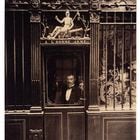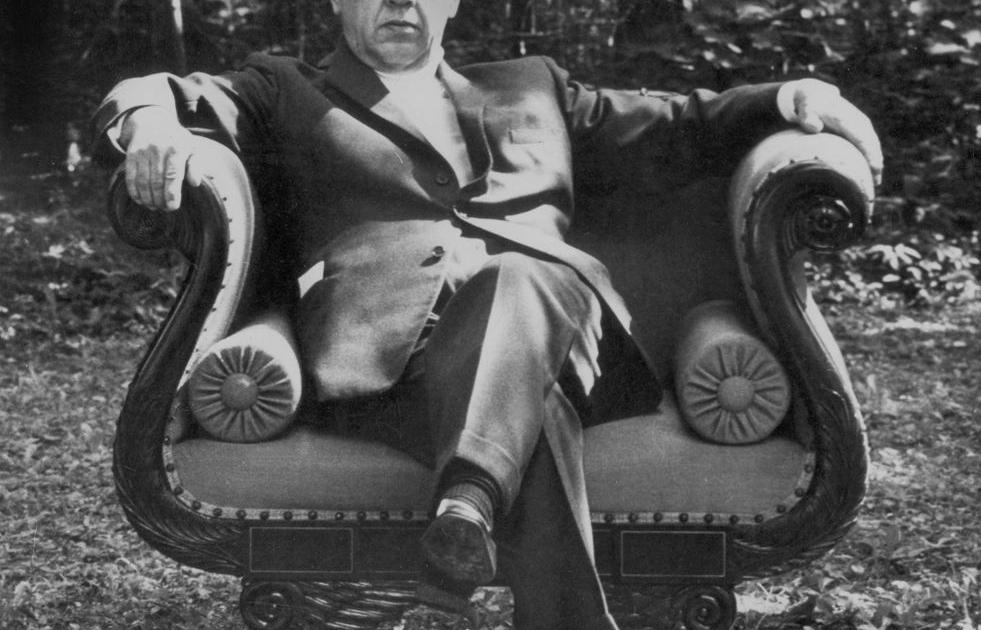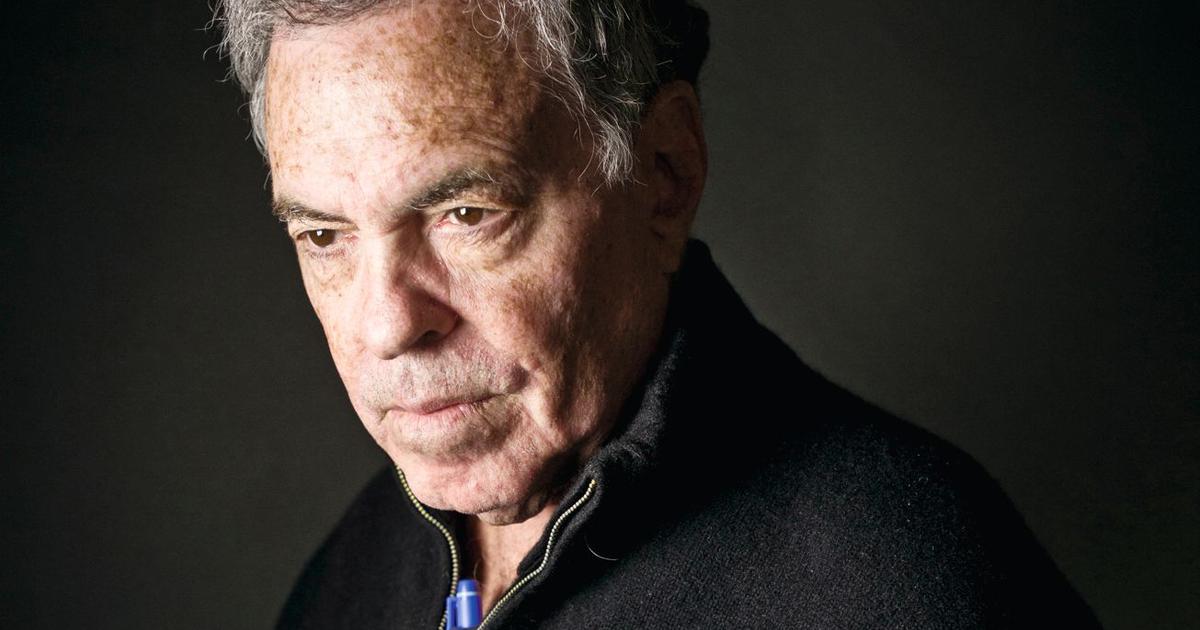Of Eugène Atget (Libourne, 1957- Paris, 1927) the surrealist poet Robert Desnos wrote that he was “an old man with the face of a tired actor”. At least that is how it was shown in the superb frontal portrait that Berenice Abbott managed to make of the elusive photographer in 1927. Stooped, he loosely holds his glasses with his right hand, while the firm and delicate posture of his left hand seems to rest the imperturbable determination that took to photograph without respite and on his own initiative the old Paris. Solitary streets, doors, windows and shop windows, forgotten gardens and damp alleys inhabited by figures that sometimes seem like specters, silent witnesses of the urban transformation that the city of the Seine was experiencing every day. Images that the author humbly referred to as "artist documents."Even so, the inquisitive brightness of his gaze - a few days after forever extinguishing - betrayed the unmistakable pleasure of seeing; his nature as an artist.
PHOTO GALLERY: Eugène Atget: documents for artists
Emphasizing the interpretation of Atget's work as an artistic ensemble - as opposed to the documentary archival treatment that it has sometimes received - is precisely one of Eugène Atget's purposes. Voir Paris, the exhibition that the Henri Cartier-Bresson Foundation (HCB) inaugurates on June 3 at its headquarters in the French capital. The exhibition is the result of collaboration with the Carnavelet museum in Paris, where the largest archive of the author is kept. More than 9,000 copies made over 30 years, in 18x24 format, during which this lonely walker with a documentary eagerness gave shape to a work that would make him a forerunner of modern photography. "Atget is one of the most fascinating figures in the history of photography", highlights Anne de Mondenard,in charge of the department of photography and digital images of Carnavalet and curator of the exhibition together with Agnès Sire, director of the HCB Foundation. "He is recognized for having made the street his theater and for his attention to modest themes," adds De Mondenard. From Abbott to Lee Friendlander, passing through the pedestal of Walker Evans, Atget's influence endures. "
Among his followers was Henri Cartier-Bresson, who began to imitate his style when he discovered his work in 1926, until he discovered the Leica camera, through which he would define his characteristic approach to the medium.
“Atget was working with a bellows chamber.
His figure was very visible on the street, unlike Cartier-Bresson, who took pictures as if he were stealing something ”, Sire emphasizes.
At the same time, the curator describes the delight of seeing that Atget's images imbue as “Bressonian.
Something that is not usually alluded to and is decisive, since without this manifest pleasure his work would be reduced to mere documentation ”.
Cabaret de l'Homme Armé, in September 1900.Eugène Atget / Paris Musées / Musée Carnavalet-Histoire de Paris
First he was an unsuccessful actor. His beginnings in photography led him to take images for artists in his studios - Utrillo, Derain and Vlaminck, among them - something that provided him with a livelihood. Little by little the pleasure of photographing took hold of him and his interest in the medium grew. Attention to detail, innovative framing, delicacy and a characteristic atmosphere shrouded in mystery defined an unprecedented style. Urban landscapes, often devoid of figures, echoing the human condition. He lived in Montparnasse, a few meters from the studio of Man Ray, who, fascinated by his neighbor, made his work known to the surrealist group. "His spirit was of the same race as Henri Rousseau the Customs Officer," observed Desnos."When Atget started photographing, he would bring naturalism with him," says Sire. “He distanced himself from pictorialism. He rejected the picturesque and sentimental, something that was extraordinary for the surrealists ”. In June 1926, when Man Ray asked him to publish some of his photographs in one of the twelve issues of
The Révolution Surréaliste
, put only one condition: “Do not mention my name.
They are simple documents that I do ”.
“Actually the notion of the photographer as an artist, as we understand it today, is something that comes during the last stage of the 20th century.
Until then, one was just a photographer, ”observes Sire.
“In a way, the anecdote is reminiscent of Cartier-Bresson, who even in the 1980s used to say: 'Artist, artist, what does that word mean?
The term has no importance in itself ”.
The edition of the sample, carried out over two years, has been a laborious task, since part of the copies were pasted on large sheets of cardboard, accompanied by files from other authors. "These are very fragile copies," adds Sire. "Made by himself. Some have lost their color. And I say color because they are not black and white, they have an ocher and yellowish hue ”. Something that has been respected in the exquisite monograph that accompanies the exhibition, published by Atelier Editions Xavier Barral with the same name, where each image preserves its natural color and maintains its natural margins. Among the works, the curator highlights
Église Saint Médard V
(1900-1901), where a horse appears as a magical figure in front of the temple: “It is a photograph of great poetic and unknown charge.
That is distinguished from the images without figures with which the author is normally identified.
Without the animal, the work would lose its essence ”.
Saint-Médard Church, 1900-1901.Eugène Atget / Paris Musées / Musée Carnavalet-Histoire de Paris
"Curiously, Atget and Marcel Proust were contemporaries," says Sire. “They both dedicated themselves to describing Paris, but in their portraits we see a totally different city. More politicized, Atget focused on humble Paris, on the small streets and on the dignity of the people of the suburbs ”. Sometimes the author repeated the motifs, recording the variations in light. “He would return to the same place, with a lapse sometimes of years. He worked both at dawn and at dusk, and at the end of his life, one can see that he is increasingly interested in light, which shows his interest as a photographer ”, highlights Sire. In 1920 Paul Leon, director of Fine Arts, wrote a letter, expressing his concern for the future of his "beautiful collection of photographs, which may fall into hands that do not know their value [...] I can say that I have all of old Paris" .
Days after the portrait session in Abbott's studio, the photographer, then Man Ray's assistant, set out to visit Atget in order to show him the images. He found out that he had died. With the help of her friends, the photographer bought part of the archive (another remained in the hands of French museums) and, together with the gallery owner Julien Levy, made her work public in the United States. "The recognition of his figure would therefore come from America, although previously it was established by the surrealists in France", clarifies Sire. "It happened as with Cartier-Bresson, who held three exhibitions in New York before the first was organized in France." In 1968, MoMA purchased the Atget collection from Abbott and Levy. It was the largest acquisition of an individual collection in the history of the museum's photography department."These are not albums that an artist leaves in bookstores, but rather the vision that a poet bequeaths to the poet," wrote Desnos.
Voir Paris.
Eugene Atget
.
Henri Cartier-Bresson Foundation.
Paris.
From June 3 to September 19.
Voir Paris.
Eugene Atget.
Atelier Editions Xavier Barral, 2021. 224 pages.
42 euros.
You can follow BABELIA on
and
, or sign up here to receive
our weekly newsletter
.









